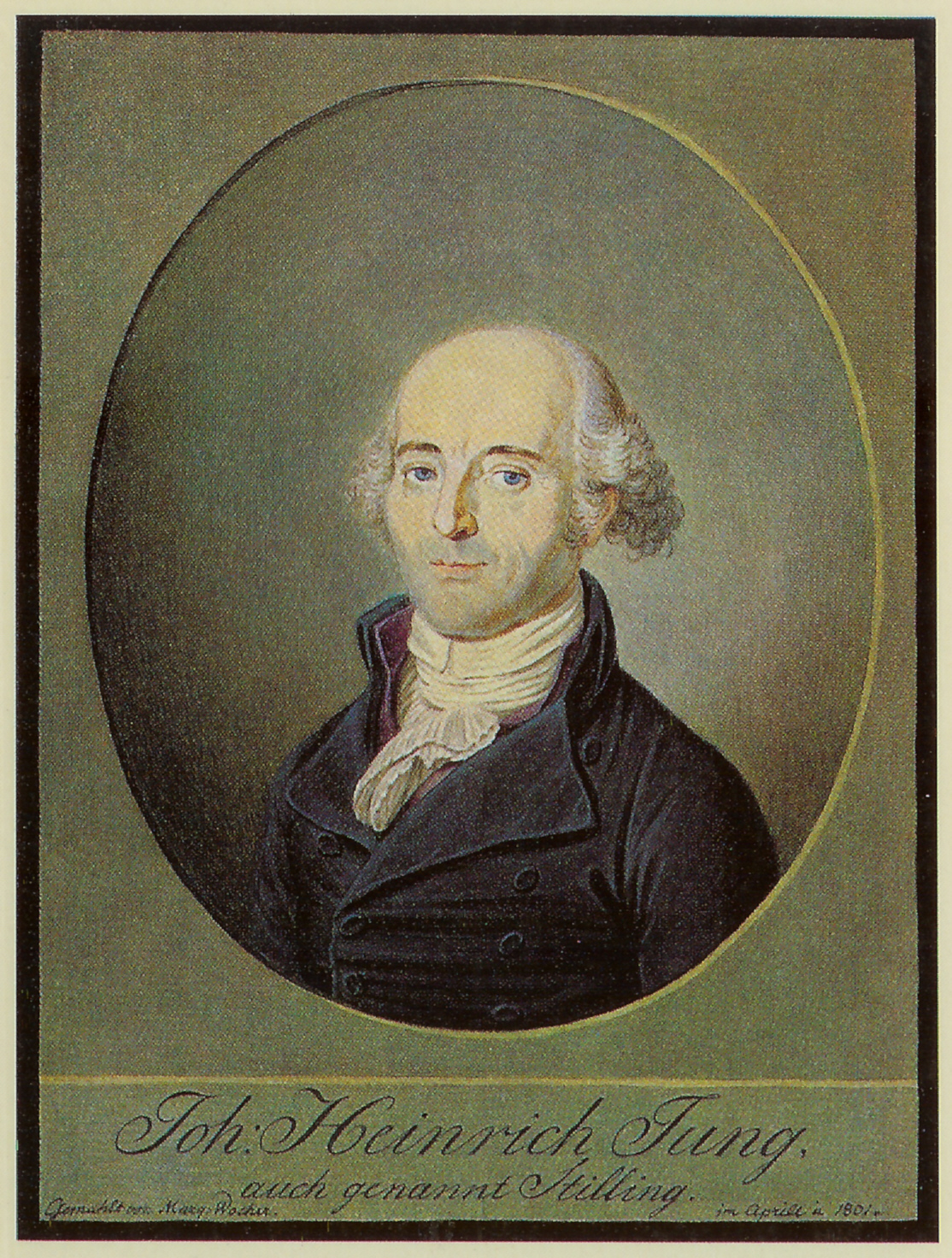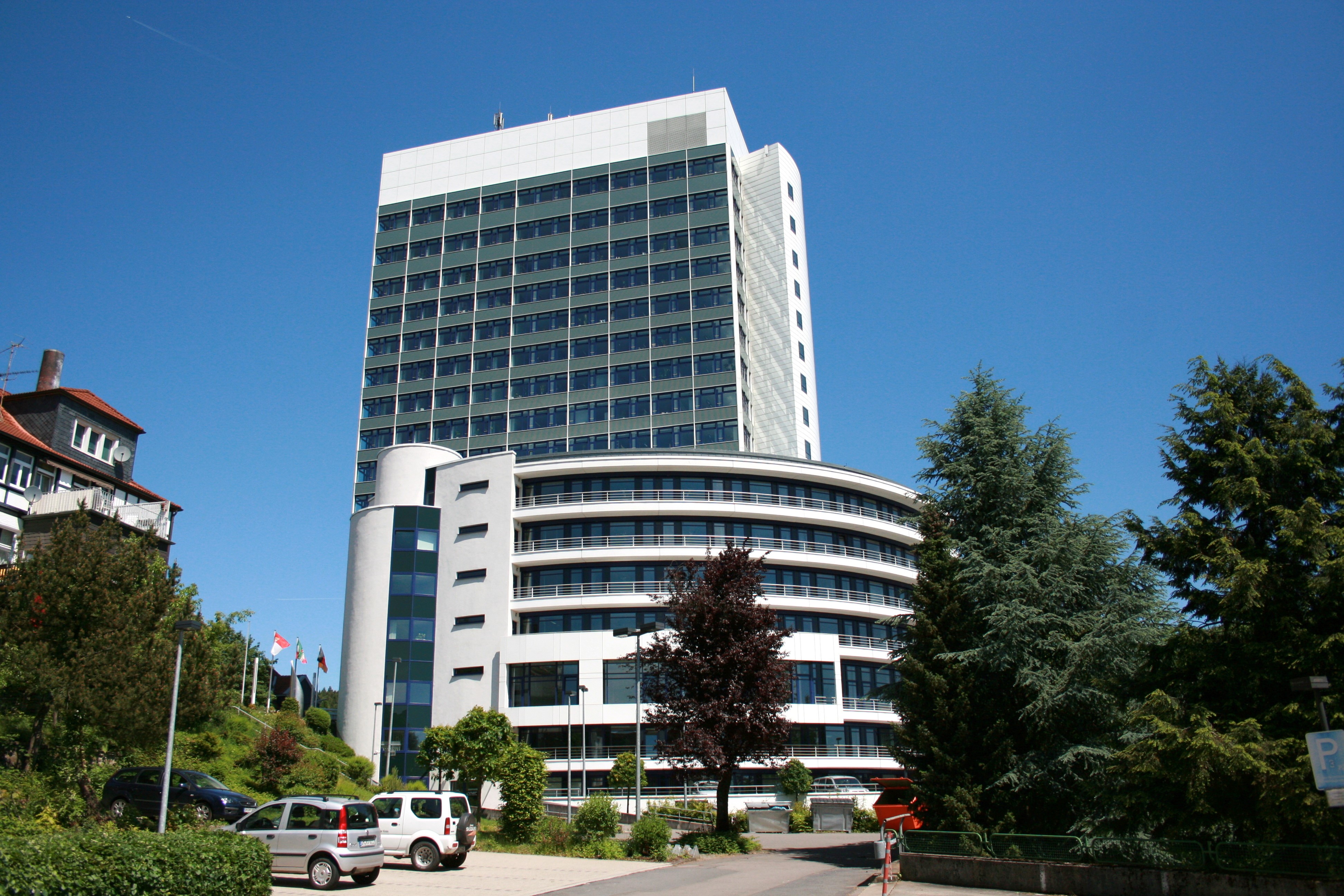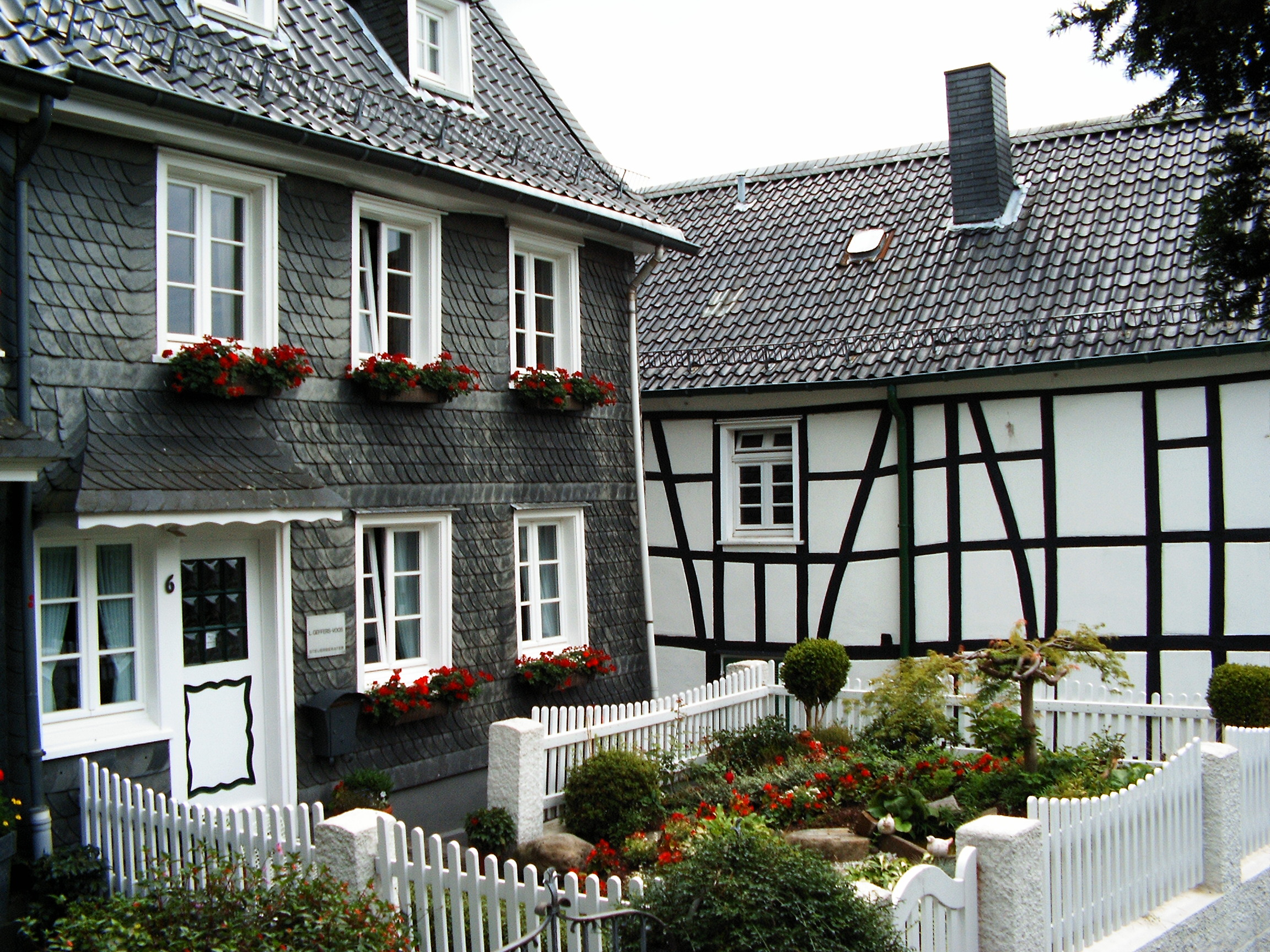|
Radevormwald
Radevormwald (; ksh, Radefürmwald) is a municipality in the Oberbergischer Kreis, in North Rhine-Westphalia, Germany. It is one of the oldest towns in the Bergischen Land, formerly the County and Duchy of Berg. Geography Radevormwald is located about 50 km east of Cologne. At 421 metres above sea level, it was the highest-situated town in the administrative region of Düsseldorf; it is now in the administrative region of Cologne. Neighbouring places * Ennepetal * Breckerfeld * Halver * Wipperfürth * Hückeswagen * Remscheid * Wuppertal * Schwelm Division of the municipality Places submerged by the Wuppertal dam * Dörpe * Friedrichstal * Nagelsberger Gemarke * Oege Wupper villages The river Wupper flows through part of the town lands. In the villages Dahlerau, Vogelsmühle and Dahlhausen – which are located in the Wupper valley and so are known as the "Wupper villages" – this led to the establishment of textile works. These settlements used the water for the ... [...More Info...] [...Related Items...] OR: [Wikipedia] [Google] [Baidu] |
Hückeswagen
Hückeswagen ) is a town in the north of Oberbergischen Kreis, in North Rhine-Westphalia, Germany. It is part of the governmental district of Cologne. Geography Hückeswagen is situated on the river Wupper. Two dams, Bevertal dam and Wuppertal dam, are near the city. Hückeswagen's location in the narrow valley and well as the castle mountain are notable. It is located approximately 40 km away from Cologne. Nearby towns are Radevormwald, Wipperfürth, Wermelskirchen and Remscheid. The coat of arms of Hückeswagen The arms were granted on August 9, 1892. The arms show in the upper part the lion from the arms of the Counts of Berg, who bought the area in 1260 from the Counts of Hückeswagen. The lower part is a symbol for the textile industry, which has been important to the town since the late Middle Ages. The combination of lion and spindle appears first in a seal from 1555. History Hückeswagen was an ancestral seat of the counts of Hückeswagen and in 1085 became for ... [...More Info...] [...Related Items...] OR: [Wikipedia] [Google] [Baidu] |
Wipperfürth
310px, Map of the city 250px, Town hall Wipperfürth () is a municipality in the Oberbergischer Kreis of North Rhine-Westphalia, Germany, about 40 km north-east of Cologne, and the oldest town in the Bergischen Land. History The eldest documentary mention dates from 1131. In the Siegburger Mirakelbuch the place is already designated Oppidum(=town). Manner of writing of the first naming: "Weperevorthe". Wipperfürth received town rights between 1217 and 1222. Since 1283 the administration of the town was governed by count Adolf V. von Berg. Already in 1275 king Rudolf von Habsburg allowed the count to move his mint from Wildberg to Wipperfürth. Here, Pfennige were stamped according to Cologne model. In 1328, with the privilege of king Louis the Bavarian the first coinage of Groschen in Germany began in Wipperfürth. Since the 14th century the town was a member of the Hanse. Businesspeople of the town traveled to Stockholm, Dorpat, Malmö, Novgorod, Reval and Lübeck. T ... [...More Info...] [...Related Items...] OR: [Wikipedia] [Google] [Baidu] |
Oberbergischer Kreis
The Oberbergischer Kreis ( ksh, Boverbärjische Kreiß) is a ''Kreis'' (district) in the state of North Rhine-Westphalia, Germany. Neighboring districts are Ennepe-Ruhr, Märkischer Kreis, Olpe, Altenkirchen, Rhein-Sieg, Rheinisch-Bergischer Kreis, and the urban districts Remscheid and Wuppertal. Name The district was named after the region known as ''Bergisches Land'', which belonged to the County of Berg for most of the medieval era. What is called "Oberbergisch" ("upper Bergian") lies in the southeast of that earldom. By 1740, descriptions of the area distinguished between "Niederbergisch", which was north of the river Wupper, and "Oberbergisch" to its south. In 1816, after the entire Rhineland was annexed to Prussia, the districts of Waldbröl, Homburg, Gimborn, Wipperfürth, and Lennep were created within the area now covered by the district. In 1825 the districts Gimborn and Homburg were merged into the district Gummersbach. In 1932 it was merged with the district o ... [...More Info...] [...Related Items...] OR: [Wikipedia] [Google] [Baidu] |
Breckerfeld
Breckerfeld is a town in the district of Ennepe-Ruhr-Kreis, in North Rhine-Westphalia, (Germany). It is located in the southeasternmost part of the Ruhr area in northern Sauerland. The town is a member of Regionalverband Ruhr (association). Geography Breckerfeld is a rural community in a hilly area. The weather around the city is generally cool with a substantial amount of rain. The town consists of two administrative parts: Breckerfeld proper and Waldbauer. History Breckerfeld has had town rights since 1396 and was a member of the Hanseatic League. From 1907 until 1963 the Haspe–Voerde–Breckerfeld Light Railway connected Breckerfeld with the Elberfeld–Dortmund railway at Haspe. In 1970, the independent municipality of Dahl joined the town of Breckerfeld. In 1975, the federal parliament decided to reorganize this area into falling within the boundaries of the nearby district-free city, Hagen. Nena, one of Germany's most successful pop-singers, spent the first several y ... [...More Info...] [...Related Items...] OR: [Wikipedia] [Google] [Baidu] |
Elberfeld
Elberfeld is a municipal subdivision of the German city of Wuppertal; it was an independent town until 1929. History The first official mentioning of the geographic area on the banks of today's Wupper River as "''elverfelde''" was in a document of 1161. Etymologically, ''elver'' is derived from the old Low German word for "river." (See etymology of the name of the German Elbe River; cf. North Germanic ''älv''.) Therefore, the original meaning of "elverfelde" can be understood as "field on the river." Elverfelde received its town charter in 1610. In 1726, Elias Eller and a pastor, Daniel Schleyermacher, founded a Philadelphian society. They later moved to Ronsdorf in the Duchy of Berg, becoming the Zionites, a fringe sect. In 1826 Friedrich Harkort, a famous German industrialist and politician, had a type of suspension railway built as a trial and ran it on the grounds of what is today the tax office at Elberfeld. In fact the railway, the Schwebebahn Wuppertal, was e ... [...More Info...] [...Related Items...] OR: [Wikipedia] [Google] [Baidu] |
Solingen
Solingen (; li, Solich) is a city in North Rhine-Westphalia, Germany. It is located some 25 km east of Düsseldorf along the northern edge of the region called Bergisches Land, south of the Ruhr area, and, with a 2009 population of 161,366, is after Wuppertal the second-largest city in the Bergisches Land. It is a member of the regional authority of the Rhineland. Solingen is called the "City of Blades", since it has long been renowned for the manufacturing of fine swords, knives, scissors and razors made by famous firms such as WKC, DOVO, Wüsthof, Zwilling J. A. Henckels, Böker, Güde, Hubertus, Diefenthal, Puma, Clauberg, Eickhorn, Linder, Carl Schmidt Sohn, Dreiturm, Herder, and numerous other manufacturers. In medieval times, the swordsmiths of Solingen designed the town's coat of arms, which continues to the present. In the latter part of the 17th century, a group of swordsmiths from Solingen broke their guild oaths by taking their sword-making secrets with ... [...More Info...] [...Related Items...] OR: [Wikipedia] [Google] [Baidu] |
Guilder
Guilder is the English translation of the Dutch and German ''gulden'', originally shortened from Middle High German ''guldin pfenninc'' " gold penny". This was the term that became current in the southern and western parts of the Holy Roman Empire for the Fiorino d'oro (introduced in 1252). Hence, the name has often been interchangeable with ''florin'' (currency sign ''ƒ'' or ''fl.''). The guilder is also the name of several currencies used in Europe and the former colonies of the Dutch Empire. Gold guilder The guilder or gulden was the name of several gold coins used during the Holy Roman Empire. It first referred to the Italian gold florin introduced in the 13th century. It then referred to the Rhenish gulden (florenus Rheni) issued by several states of the Holy Roman Empire from the 14th century. The Rhenish gulden was issued by Trier, Cologne and Mainz in the 14th and 15th centuries. Basel minted its own ''Apfelgulden'' between 1429 and 1509. Bern and Solothurn fol ... [...More Info...] [...Related Items...] OR: [Wikipedia] [Google] [Baidu] |
Middle Ages
In the history of Europe, the Middle Ages or medieval period lasted approximately from the late 5th to the late 15th centuries, similar to the post-classical period of global history. It began with the fall of the Western Roman Empire and transitioned into the Renaissance and the Age of Discovery. The Middle Ages is the middle period of the three traditional divisions of Western history: classical antiquity, the medieval period, and the modern period. The medieval period is itself subdivided into the Early Early may refer to: History * The beginning or oldest part of a defined historical period, as opposed to middle or late periods, e.g.: ** Early Christianity ** Early modern Europe Places in the United States * Early, Iowa * Early, Texas * Early ..., High Middle Ages, High, and Late Middle Ages. Population decline, counterurbanisation, the collapse of centralized authority, invasions, and mass migrations of tribes, which had begun in late antiquity, continued i ... [...More Info...] [...Related Items...] OR: [Wikipedia] [Google] [Baidu] |
Hydroelectricity
Hydroelectricity, or hydroelectric power, is electricity generated from hydropower (water power). Hydropower supplies one sixth of the world's electricity, almost 4500 TWh in 2020, which is more than all other renewable sources combined and also more than nuclear power. Hydropower can provide large amounts of low-carbon electricity on demand, making it a key element for creating secure and clean electricity supply systems. A hydroelectric power station that has a dam and reservoir is a flexible source, since the amount of electricity produced can be increased or decreased in seconds or minutes in response to varying electricity demand. Once a hydroelectric complex is constructed, it produces no direct waste, and almost always emits considerably less greenhouse gas than fossil fuel-powered energy plants. [...More Info...] [...Related Items...] OR: [Wikipedia] [Google] [Baidu] |
County Of Mark
The County of Mark (german: Grafschaft Mark, links=no, french: Comté de La Marck, links=no colloquially known as ) was a county and state of the Holy Roman Empire in the Lower Rhenish–Westphalian Circle. It lay on both sides of the Ruhr River along the Volme and Lenne rivers. The Counts of the Mark were among the most powerful and influential Westphalian lords in the Holy Roman Empire. The name ''Mark'' is recalled in the present-day district in lands south of the Ruhr in North Rhine-Westphalia, Germany. The northern portion (north of the Lippe river) is still called ("Higher Mark"), while the former "Lower Mark" (between the Ruhr and Lippe Rivers) is—for the most part—merged in the present Ruhr area. Geography The County of the Mark enclosed an area of approximately 3,000 km² and extended between the Lippe and Aggers rivers (north-south) and between Gelsenkirchen and Bad Sassendorf (west-east) for about 75 km. The east-west flowing Ruhr separated the ... [...More Info...] [...Related Items...] OR: [Wikipedia] [Google] [Baidu] |
Wool
Wool is the textile fibre obtained from sheep and other mammals, especially goats, rabbits, and camelids. The term may also refer to inorganic materials, such as mineral wool and glass wool, that have properties similar to animal wool. As an animal fibre, wool consists of protein together with a small percentage of lipids. This makes it chemically quite distinct from cotton and other plant fibres, which are mainly cellulose. Characteristics Wool is produced by follicles which are small cells located in the skin. These follicles are located in the upper layer of the skin called the epidermis and push down into the second skin layer called the dermis as the wool fibers grow. Follicles can be classed as either primary or secondary follicles. Primary follicles produce three types of fiber: kemp Kemp may refer to: Places * Kemp, Illinois * Kemp, Ohio * Kemp, Oklahoma * Kemp, Texas * Kemp Land and Kemp Coast, Antarctica * Kemp Town, a 19th-century estate in East Sussex, En ... [...More Info...] [...Related Items...] OR: [Wikipedia] [Google] [Baidu] |
Parish
A parish is a territorial entity in many Christian denominations, constituting a division within a diocese. A parish is under the pastoral care and clerical jurisdiction of a priest, often termed a parish priest, who might be assisted by one or more curates, and who operates from a parish church. Historically, a parish often covered the same geographical area as a manor. Its association with the parish church remains paramount. By extension the term ''parish'' refers not only to the territorial entity but to the people of its community or congregation as well as to church property within it. In England this church property was technically in ownership of the parish priest '' ex-officio'', vested in him on his institution to that parish. Etymology and use First attested in English in the late, 13th century, the word ''parish'' comes from the Old French ''paroisse'', in turn from la, paroecia, the latinisation of the grc, παροικία, paroikia, "sojourning in a fore ... [...More Info...] [...Related Items...] OR: [Wikipedia] [Google] [Baidu] |







